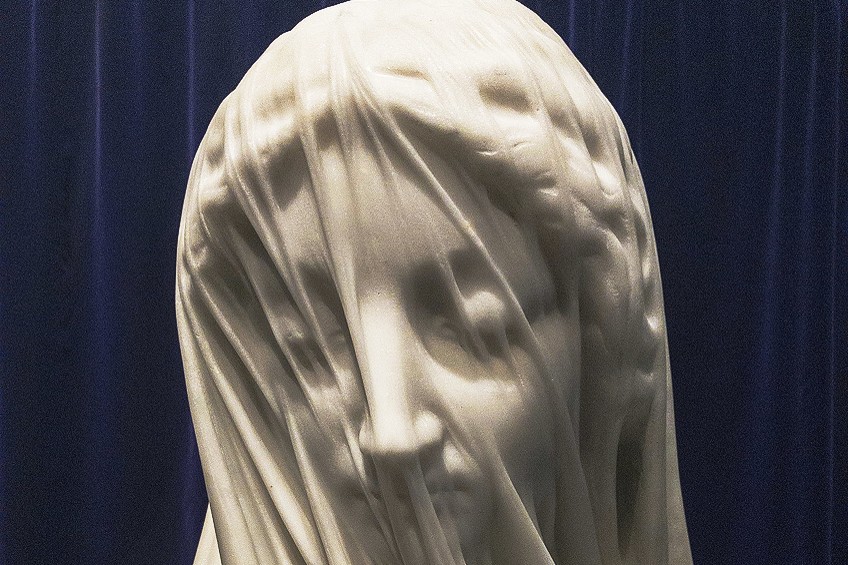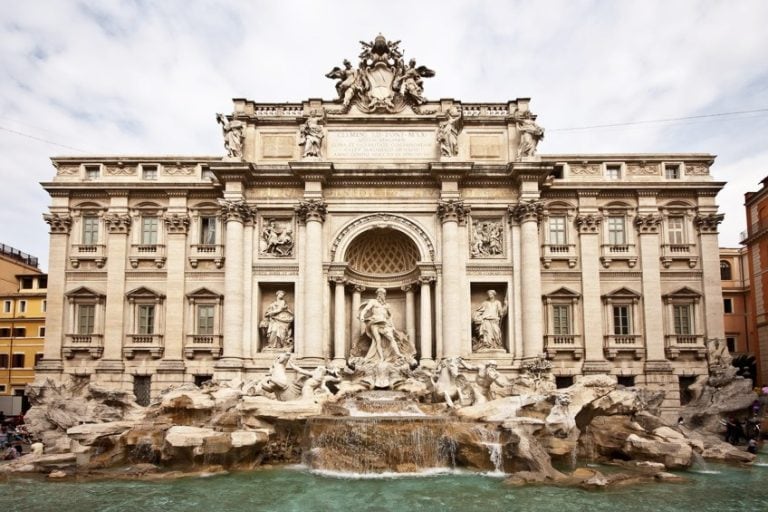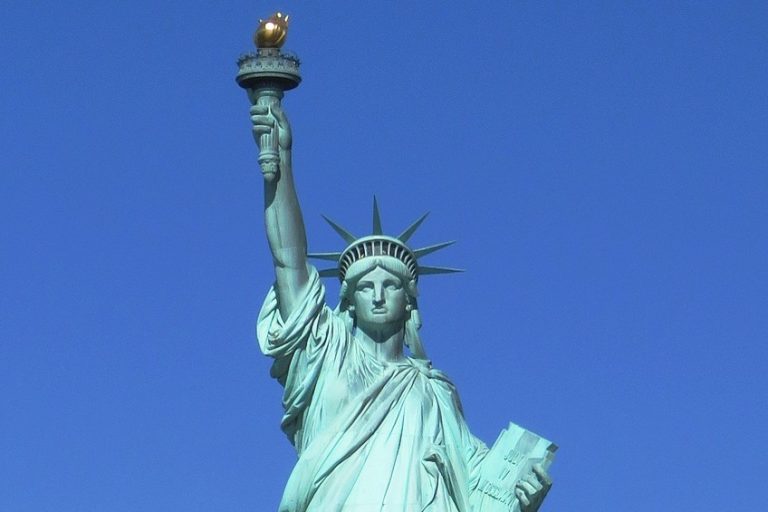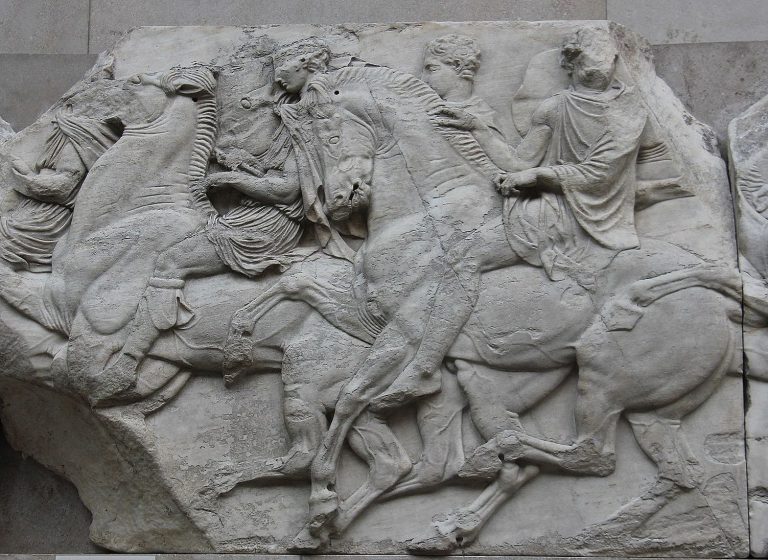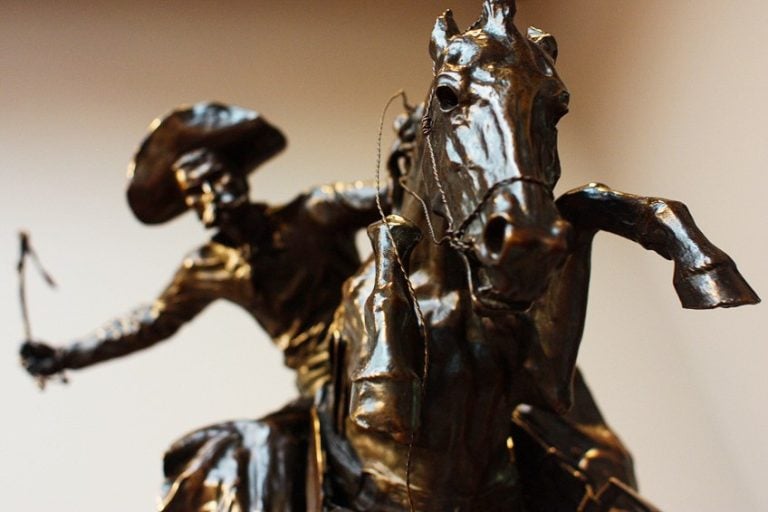“The Veiled Virgin” Statue – The Famous Marble Statue With a Veil
Giovanni Strazza’s The Veiled Virgin statue depicts a veiled bust of the Virgin Mary. The precise date of creation of the veiled sculpture is uncertain, however, it was most likely created in the early 1850s. The marble statue with a veil is renowned for the almost translucent quality it possesses.
The Story About the Marble Statue With a Veil
Sculptors have been producing statues in marble for millennia, a material prized for its smoothness and translucence. These properties make the metamorphic material ideal for sculptures that need fine detail, such as anatomical intricacies and flowing draperies. The Veiled Virgin statue, by Giovanni Strazza, the sculptor from Italy, effectively portrays both of these cases.
There is not much really known about the veiled statue’s development. Historians think Strazza, who was born in Milan, created the sculpture in the 1850s while residing in Rome.
The Virgin Mary is shown in the Veiled sculpture with a veil wrapped over the curves of her accurately drawn features. With her eyes shut and her head inclined down, the woman looks to be either quietly praying or expressing mourning, both of which are fairly common in depictions of the Virgin Mary.
The statue is crafted of Carrara marble, a Tuscany-derived stone that was traditionally employed by ancient Roman buildings and Italian Renaissance craftsmen.
This high-quality Carrara marble stone provided the ideal material for creating veil statues, a common theme among Giovanni Strazza and his contemporaries. They were particularly engaged in sculpting busts and statues of women with their faces hidden under see-through clothes.
The Artist: Giovanni Strazza
| Nationality | Italian |
| Date of Birth | c. 1818 |
| Date of Death | c. 1875 |
| Place of Birth | Milan, Italy |
There is very little information about the life of Giovanni Strazza. The sculptor from Italy hailed from the city of Milan. Between 1840 through 1858, he flourished in Rome after studying at the Brera Academy in Milan. From 1860 until 1875, he relocated back to Milan and lectured at his alma institution, handing over the Sculpture Chair position to Giosuè Argenti.
Out of all of Giovanni Strazza’s sculptures, his most well-known work is “The Veiled Virgin” statue. Another of Giovanni Strazza’s sculptures, “L’Audace Righetto” (1851) is located in Milano’s Palazzo Litta. He later died in the same city of his birth, Milan.
The Veiled Virgin Statue (c. the 1850s)
| Date Completed | c. the 1850s |
| Medium | Carrara Marble |
| Dimensions | 48 cm |
| Current Location | Presentation Convent, St. John’s |
Giovanni Strazza, a prominent Italian sculptor, created this figure in perfect Carrera marble in Rome. Other Giovanni Strazza sculptures can be viewed at the Archbishop’s Palace in Milan, as well as the Vatican Museums. The Newfoundlander labeled the veiled sculpture as Strazza’s second piece on the theme of a veiled lady. Nationalism in Italy was experiencing a resurgence in the mid-19th century, and there was a renaissance of patriotism in music and the arts in Italy.
Strazza’s veiled statue fits into the Risorgimento tradition of Italian nationalistic artwork.
The picture of a veiled lady was a favorite subject of Strazza’s fellow sculptors, the most notable of whom were Rafaello Monti and Pietro Rossi. The figure of the veiled lady was frequently supposed to represent Italia in the same way as Britannia represented England, Hibernia represented Ireland, and Lady Liberty represented North America.
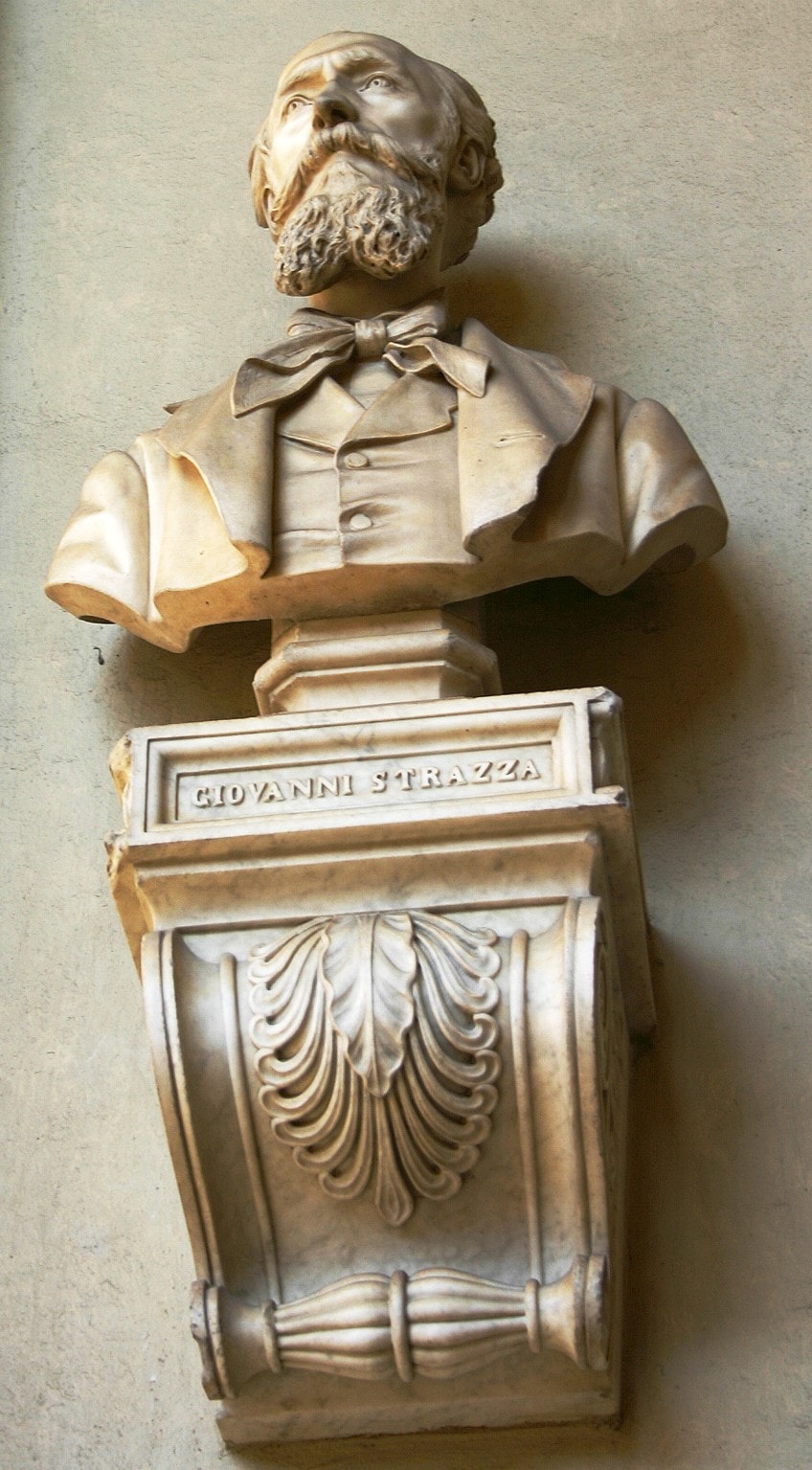
Similar marble busts of veiled ladies may be seen in North America, Canada, Ireland, and England. None, though, are as painstakingly made as Giovanni Strazza’s veiled sculpture: the facial features and hair braiding are apparent through the marble veil. The veiled statue was sent to Newfoundland in 1856, as reported in Bishop John Thomas Mullock’s journal on the 4th of December: “Giovanni Strazza sent a lovely marble statue with a veil of the Blessed Virgin Mary safely from Rome. The face is obscured, but the figure and characteristics are fully visible. It is a flawless work of art “.
The veiled statue stayed at the Episcopal Palace at St. John’s, close to the Roman Catholic Cathedral, until 1862, when the bishop handed it to the Superiors of Presentation Convent. Sister Mary di Pazzi Mullock, Bishop Mullock’s sister, was a vowed member of the order and eventually its Superior.
Many Giovanni Strazza sculptures proudly resurrected the Baroque’s creativity and marked a technical success that eclipsed that of any other piece of artwork discovered in 19th century Newfoundland. “The Veiled Virgin” statue also attests to the Irish Catholic culture at St. John’s deep ties with European cultural and patriotic initiatives of the time.
The Traditional Use of the Veil in Sculptures
Why were veils so fashionable among Italian artisans in the 19th century? One explanation why these figures appreciated this subject was because it allowed them to display their artistic abilities. A high level of talent is required to create the illusion that a solid substance, such as stone, is a flowing piece of cloth clinging to a person.
Thus, sculptors have draped their figures in drapery from ancient times to highlight their sculptural ability.
Carvings from Greece’s Hellenistic era and the Italian Renaissance are the most well-known instances of this occurrence. Without a doubt, they served as motivation for Strazza and his colleagues. “From an archaeological standpoint, the veiled statue originates from the practice of ‘wet drapery’ which already had existed in Greco-Hellenistic art,” notes the director of the École du Louvre.
https://www.youtube.com/watch?v=koQRHPT1fuI
“Sculptors have always risen to the occasion.” Artists during this period explored the veil theme in reaction to the Risorgimento, or Italian unity, in conjunction with a Neo-classical reinterpretation of drapery. The picture of a veiled lady became a metaphor for the unified country as the Italian people gained a fresh appreciation of arts and culture.
Strazza chose to mix a patriotic sign with Catholic symbolism for a variety of reasons. While his religious beliefs are unknown, many believe it is a labor of devotion. However, it is probable that he was just influenced by the religious statues done by Renaissance and Baroque craftsmen before him.
Relocation of the Statue to Canada
While one may anticipate this famous veiled statue to stay in Italy, it has lived in Canada for nearly 150 years. The sculpture was brought to Newfoundland and found its place at St. John’s in 1856 when it was accepted by the bishop and installed in the Episcopal Palace. Mullock lauded his new asset in his journal, writing, “Obtained securely from Rome, a lovely sculpture of the Blessed Virgin Mary in marble, by Strazza.” He continued by saying that “the face is obscured, but the form and characteristics are fully visible […] It is a flawless work of art.”
It was relocated to the adjacent Presentation Convent in 1862, where it has resided and enthralled visitors ever since.
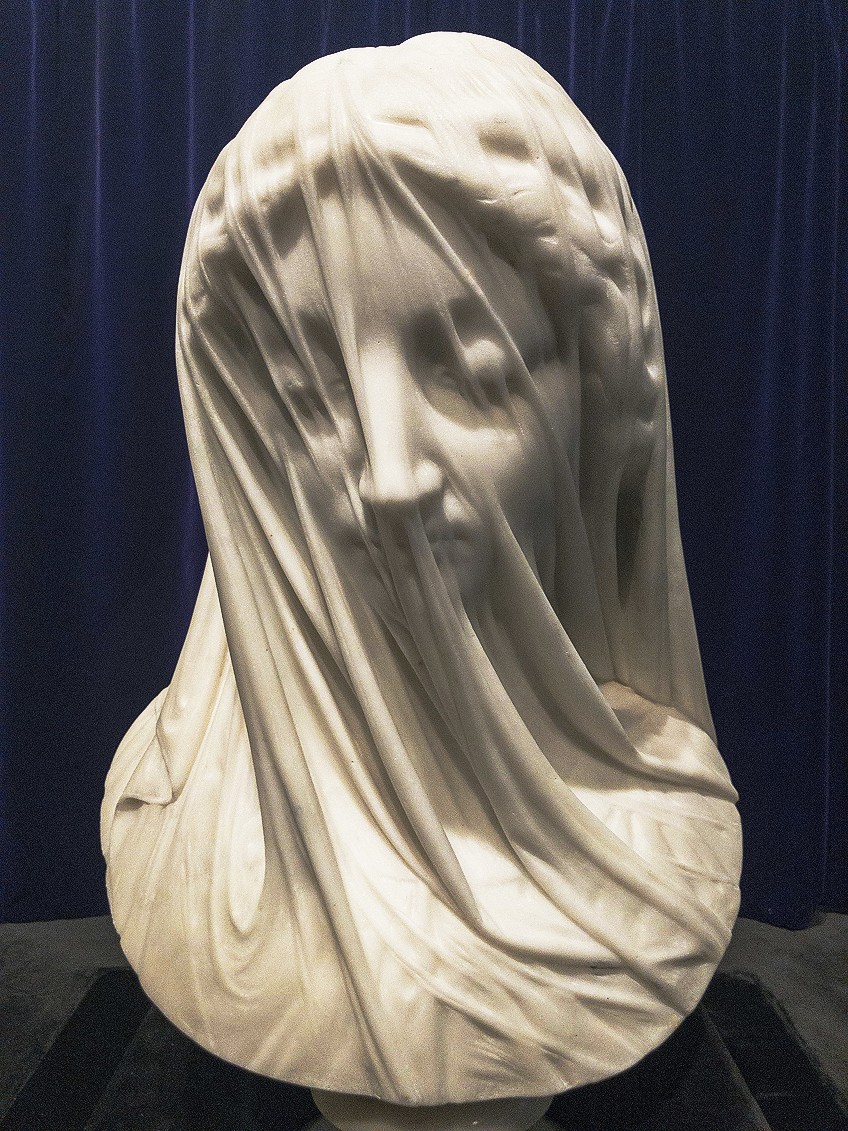
A local newspaper, The Newfoundlander, excitedly covered its relocation as well. “To state that this image surpasses in artistic perfection any piece of artwork we have ever seen offers just a hazy picture of its incomparable beauty,” the paper says. “The thought of such a stunning win had never even crossed our minds. Ordinary words will never do justice to a topic like this – to the extraordinary creative talent and feelings it evokes in the viewer.”
“The Veiled Virgin” statue, is one of those works of art that continues to elicit debate among art historians and enthusiasts. The bust of the Virgin Mary shrouded in a tiny veil is noteworthy for several reasons. The workmanship Strazza showed in obtaining the shrouded aspect, as well as the cryptic meaning of the sculpture, all add to “The Veiled Virgin’s” distinctiveness. Historians think Strazza, who was born in Milan, created this masterpiece in Rome about 1850. The sculpture has been in Canada for more than 150 years.
Frequently Asked Questions
Who Created the Famous Marble Statue With a Veil?
The famous veiled statue was created by Giovanni Strazza, the Italian sculptor who was born in the city of Milan. After studying at the Brera Academy in Milan, he flourished in Rome in the time span between 1840 and 1858. From 1860 until 1875, he returned to Milan and lectured at his alma mater, handing over the Sculpture Chair to Giosuè Argenti. The Veiled Virgin statue is the most well-known of Giovanni Strazza’s sculptures. L’Audace Righetto (1851), another of Giovanni Strazza’s sculptures, is housed at Milan’s Palazzo Litta.
Why Was the Concept of the Veiled Statue Popular?
One reason that sculptors liked this subject was that it allowed them to show off their artistic ability. A high level of talent is required to create the illusion that a solid item, such as stone, is essentially a fluid piece of cloth attached to a person. Sculptors have draped their figures with drapery throughout antiquity to showcase their sculptural ability. The most well-known instances of this phenomenon are sculptures from the Hellenistic era in Greece and the Italian Renaissance, and they definitely functioned as encouragement for Strazza and his colleagues.
Where Is the Veiled Statue Now?
The famous statue is no longer in Italy. It was moved to Canada in 1856 and it currently resides at the Presentation Convent.
Isabella studied at the University of Cape Town in South Africa and graduated with a Bachelor of Arts majoring in English Literature & Language and Psychology. Throughout her undergraduate years, she took Art History as an additional subject and absolutely loved it. Building on from her art history knowledge that began in high school, art has always been a particular area of fascination for her. From learning about artworks previously unknown to her, or sharpening her existing understanding of specific works, the ability to continue learning within this interesting sphere excites her greatly.
Her focal points of interest in art history encompass profiling specific artists and art movements, as it is these areas where she is able to really dig deep into the rich narrative of the art world. Additionally, she particularly enjoys exploring the different artistic styles of the 20th century, as well as the important impact that female artists have had on the development of art history.
Learn more about Isabella Meyer and the Art in Context Team.
Cite this Article
Isabella, Meyer, ““The Veiled Virgin” Statue – The Famous Marble Statue With a Veil.” Art in Context. April 20, 2022. URL: https://artincontext.org/the-veiled-virgin-statue/
Meyer, I. (2022, 20 April). “The Veiled Virgin” Statue – The Famous Marble Statue With a Veil. Art in Context. https://artincontext.org/the-veiled-virgin-statue/
Meyer, Isabella. ““The Veiled Virgin” Statue – The Famous Marble Statue With a Veil.” Art in Context, April 20, 2022. https://artincontext.org/the-veiled-virgin-statue/.


